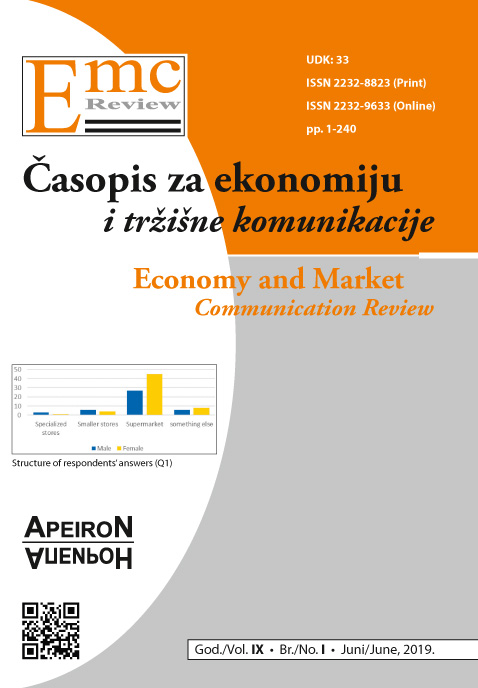A REVIEW OF RECENT TRENDS IN AIRLINE ANCILLARY REVENUES
DOI:
https://doi.org/10.7251/EMC1901132SAbstract
Airline ancillary revenue which refers to non-ticket revenue sold directly to passengers or indirectly as part of their travel experience, has become a mandatory component for the revenue mix of all airlines as well as a key reason for the improved financial performance of the airline industry in the recent years. It is generated by a large amount of activities that include „a la carte” services such as fees for checked bags, frequent flying miles to airline partners, miscellaneous sources like advertising and commission-based products such as inflight retail, and car rentals - virtually any service added to the core transportation service. Contribution of ancillary services to the total revenue streams of airlines has been increasing substantially over the past decade. In 2007, the top ten airlines, as rated by total ancillary revenue, generated $2.1 billion, while ten years later, the top ten airline total has reached $29.7 billion. The paper explores the recent growth and trends in ancillary revenue in the airline industry, particularly within in the last ten years and identifies significant differences in ancillary sources with regard to carrier type. Low-cost carriers pioneered the practice of charging for supplementary services that were previously provided free of charge by seeking revenue from checked bags, assigned seats and extra leg room seating. Traditional airlines moved from all-inclusive booking arrangement and started to adopt add-on bundling practice when selling flight tickets taking advantage of low headline price. Their ancillary revenue mostly comes from the use of frequent flyer program, a mix of baggage fees and premium seats. Top airlines in overall ancillary revenue performance measured as total revenue, a percent of revenue, or on a per passenger basis are determined in the paper and new trends in creating ancillaries are elaborated. In order to improve profit performance, the airline revenue management and distribution systems should consider total revenue from each passenger, by linking his ticket value and his ancillary revenue potential.Downloads
Published
2019-06-06
Issue
Section
Чланци
